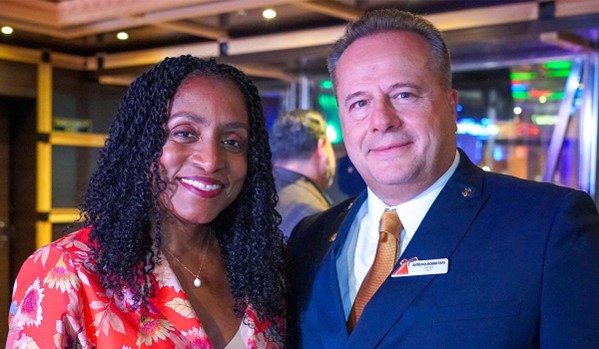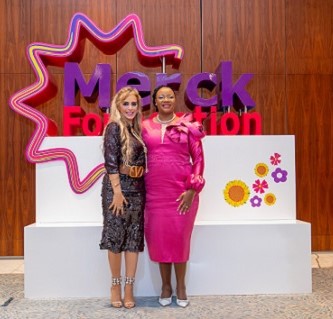Tapping into a reservoir of grief and divinity, this was history as solemnity and spectacle were in equal measures as the world said their final “good-bye” to Queen Elizabeth II. With heads of state, dignitaries and community heroes and sheroes, side-by-side inside Westminster Abbey, the significance of the moment was almost audible on this once-in a-lifetime international occasion marked the end of an era – the end of the second Elizabethan Era.
It was a ‘coming to reality’ that the Queen is no longer here. And at the centre of everything was her coffin, ahead of her mourning family. This was a moment to say goodbye. And that moment came when the Queen's coffin was brought up the aisle.
With pain etched in the faces of her children, grandchildren and great-grandchildren, her eldest, King Charles III, stared straight ahead as the “congregation of congregations” gathered for this state funeral. He led as the royals walked behind the coffin from Westminster Hall to Westminster Abbey ahead of the service.
The Prince of Wales and Duke of Sussex, were on different sides of the aisle looking equally sombre – as Harry, and his wife, Meghan, the Duchess of Sussex, sat at the end of the second row, behind his brother and Catherine, Princess of Wales. Prince Harry, along with his uncle, Prince Andrew, were not in military uniform as they follow Queen's coffin.
A trumpet played the Last Post. The silence that followed was even louder. This was how things end. In this immense quiet an era was closing. This was our moment of history. Time doesn't stand still, it never does, whether for a head of state or a nurse on a shift. The New Elizabethan era in which most of us had grown up had finished. The 20th Century boys and girls were now grey-haired parents and grandparents. Everyone has their own story to remember.
A piper played a lament as the Queen was carried slowly towards the Abbey doors, the same doors where she'd once stood on her wedding day as a 21-year-old bride. On her coffin was a sprig of myrtle grown from a cutting from her wedding bouquet.
The guests stepped outside into the daylight, stunned witnesses to something momentous. It wasn't just that we'd said farewell to the Queen, it was the recognition that we'd lost part of our own lives.
This was a date to be underlined in a future text book. A chapter closing. But the area around the Abbey had been sealed tight with security and there were no crowds on the pavement.
You could feel the static in the air as the Archbishop of Canterbury, the Most Reverend Justin Welby spoke straight to the point, describing her as “A woman of deep faith who has gone to her final rest in the firm conviction of her beliefs.
“She had”, he went on to say, “every expectation that we would meet again.
He later went on: "Her Late Majesty’s example was not set through her position or her ambition, but through whom she followed.
"The grief of this day – felt not only by the late Queen’s family but all round the nation, Commonwealth and the world – arises from her abundant life and loving service, now gone from us.
"She was joyful, present to so many, touching a multitude of lives.
"We pray especially for all her family, grieving as every family at a funeral - including so many families round the world who have themselves lost someone recently - but in this family’s case doing so in the brightest spotlight.
"May God heal their sorrow, may the gap left in their lives be marked with memories of joy and life.
"Her Late Majesty’s broadcast during Covid lockdown ended with: 'We will meet again', words of hope from a song of Vera Lynn. Christian hope means certain expectation of something not yet seen."
As four candles stood around the coffin, the orb and sceptre glowed while the Imperial State Crown poked from behind the spray of flowers. On the top of the crown was a big blue sapphire - once worn on a ring by Edward the Confessor more than 900 years ago.
With NHS workers, politicians and world leaders on – for this one, unique time – on equal-billing on the list of specially invited attendees, it was an extraordinary spectacle to witness, the plumed helmets, the convoys of overseas royals, the sea of black mourning clothes, the security whisperers, the bright clerics' robes and the heralds dressed like a pack of cards.
Baroness Scotland delivered the first lesson at Queen Elizabeth's funeral. The Rt Hon Patricia Scotland read the first lesson at Queen Elizabeth's funeral on Monday (19.09.22).
The Commonwealth secretary-general had the honour of addressing assembled guests at Westminster Abbey by reading a passage from the bible, 1 Corinthians 15, which stresses the importance of the resurrection in the Christian faith and says death will be the final enemy to be defeated by Christ.
She read: "Now is Christ risen from the dead, and become the firstfruits of them that slept. For since by man came death, by man came also the resurrection of the dead. For as in Adam all die, even so in Christ shall all be made alive.
"But every man in his own order: Christ the firstfruits; afterward they that are Christ’s at his coming. Then cometh the end, when he shall have delivered up the kingdom to God, even the Father; when he shall have put down all rule and all authority and power. For he must reign, till he hath put all enemies under his feet. The last enemy that shall be destroyed is death.
"For this corruptible must put on incorruption, and this mortal must put on immortality.
"So when this corruptible shall have put on incorruption, and this mortal shall have put on immortality, then shall be brought to pass the saying that is written, Death is swallowed up in victory. O death, where is thy sting? O grave, where is thy victory? The sting of death is sin; and the strength of sin is the law.
"But thanks be to God, which giveth us the victory through our Lord Jesus Christ. Therefore, my beloved brethren, be ye steadfast, unmoveable, always abounding in the work of the Lord, forasmuch as ye know that your labour is not in vain in the Lord."
After her address, the choir then sang a psalm which had been composed especially for the service by Judith Weir, the queen's Master of Music.
Its words were: "Like as the hart desireth the water-brooks: so longeth my soul after thee, O God. My soul is a thirst for God, yea, even for the living God: when shall I come to appear before the presence of God?
"My tears have been my meat day and night: while they daily say unto me, Where is now thy God?
"Now when I think thereupon, I pour out my heart by myself: for I went with the multitude, and brought them forth into the house of God;
"In the voice of praise and thanksgiving: among such as keep holy-day. Why art thou so full of heaviness, O my soul: and why art thou so disquieted within me?
"Put thy trust in God: for I will yet give him thanks for the help of his countenance." It was the ultimate prologue to a day to remember – for the country, union, commonwealth and rest of the world.
And, it wasn't just a case of saying a sad “farewell” to Her Majesty the Queen - it was the recognition of losing a part of our own lives.
This was a date to be underlined in a future text book. A chapter closing. But the area around the Abbey had been sealed tight with security and there were no crowds on the pavement.
It heralded a new era. “In loving devoted memory” – Charles.











